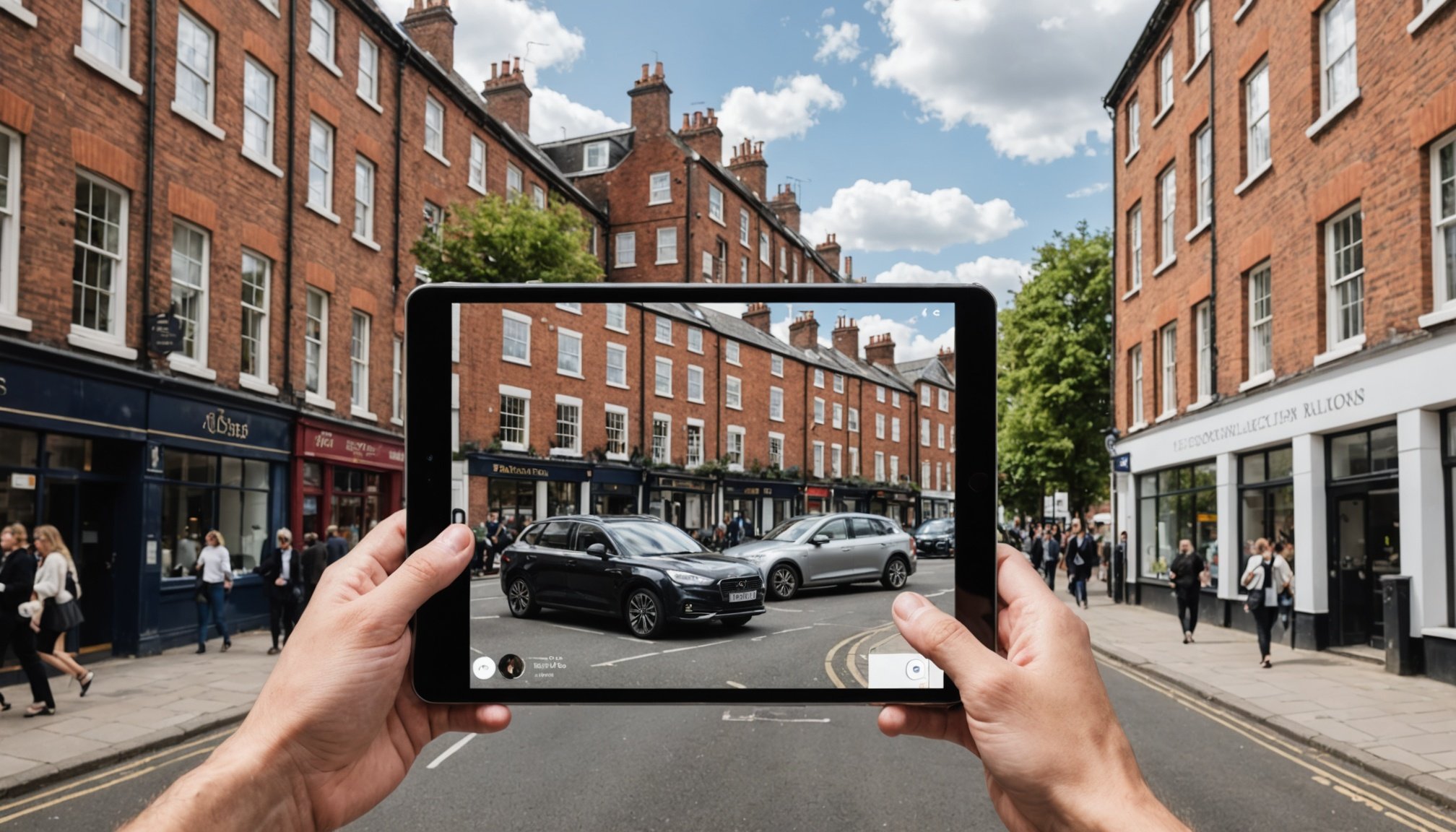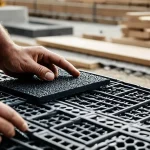Overview of Augmented Reality in Real Estate
Augmented Reality (AR) is reshaping the real estate industry by overlaying digital elements onto the physical world, providing a deeply immersive experience. This technology allows potential buyers to visualize properties in 3D, enhancing understanding beyond traditional methods. In the UK, AR has steadily gained popularity in real estate, driven by its capacity to transform property marketing strategies. This adoption reflects a broader technological evolution within the sector, often leveraging innovative marketing strategies to captivate prospective clients.
The importance of AR in real estate cannot be understated, particularly in engaging buyers during property tours. This interaction doesn’t just enhance the buyer’s experience but also significantly boosts interest and decision-making. As buyers navigate through AR-enhanced tours, they can visualize potential modifications to spaces, thus aligning properties more closely with personal preferences.
Additional reading : Mastering Retail Triumph: Leveraging AI to Predict Consumer Trends
Indeed, AR has propelled forward-thinking UK real estate companies toward adopting more innovative marketing strategies. By embedding this technology, agencies and developers present a modern, forward-thinking approach, distinguishing themselves in a competitive market. As AR technology matures, its integration will likely become a standard, highlighting properties in ways previously unimaginable.
Benefits of Augmented Reality for Property Tours
Augmented Reality (AR) significantly enhances the property tour experience for potential buyers. By providing an immersive visualization tool, AR enables buyers to see and interact with property spaces in ways never before imagined. For instance, a buyer can virtually place furniture or even explore different design modifications, creating a personalised experience tailored to their preferences. This interactive engagement not only makes the process more enjoyable but also helps in crafting a vivid representation of living in the space.
Also to see : Unleash your potential with customizable TikTok templates
The use of AR technology contributes to increased efficiency and time-saving for real estate agents. Traditional property tours require physical visits, which can be time-consuming and often inefficient. AR mitigates these challenges, allowing agents to showcase properties remotely to multiple clients in different locations. This flexibility is especially valuable in today’s fast-paced market.
Moreover, AR tours offer accessibility for remote viewers, bridging geographical gaps and enhancing convenience. Whether a potential buyer is overseas or unable to visit in person, AR technology ensures that every feature of the property is accessible at the viewer’s convenience. This capability is transforming how people engage with property markets, making the process more inclusive and efficient for all parties involved.
Case Studies of Successful AR Implementations
Exploring AR success stories in the UK property market provides insight into how augmented reality is shaping the industry. These examples showcase innovative approaches that have transformed traditional methods into cutting-edge experiences.
Example 1: High-End Real Estate Agency
One high-end real estate agency revolutionised its approach by integrating AR into its marketing strategy. By using AR technology, potential buyers could explore luxury properties remotely, experiencing detailed visualisations of interior designs and layouts. This approach not only differentiated the agency in a competitive market but also attracted a broader demographic, increasing overall engagement.
Example 2: Residential Property Developer
A leading residential property developer implemented AR to allow buyers to virtually modify home features, fostering a personalized viewing experience. The resulting buyer engagement translated into higher conversion rates, illustrating the compelling impact of innovative examples of AR usage.
Example 3: Commercial Real Estate Showcase
In the commercial real estate sector, one company employed AR to offer complete office space walkthroughs to prospective tenants. These immersive experiences provided tenants the opportunity to envision workspace layouts and adapt features to their business needs. Such UK property market innovations set a new standard, making complex commercial tours effortlessly accessible.
Technological Requirements for AR Property Tours
In the realm of real estate, AR technology requires specific hardware and software to facilitate immersive property tours. At a minimum, the equipment requirements include high-quality cameras and devices capable of rendering real-time 3D graphics, such as advanced smartphones or tablets. These devices should possess sufficient processing power to handle the computational demands of augmented reality applications effectively.
On the software side, several software solutions are pivotal in the UK market. Platforms like Unity and ARKit offer robust tools for creating dynamic AR experiences. These solutions support the integration of intricate 3D models and real-time interactive features, essential for an engaging buyer experience.
Maintaining and updating AR technology is crucial to ensuring a seamless experience for real estate agents and potential buyers. Regular software updates guarantee compatibility with newer devices and incorporate the latest features to enhance functionality. Additionally, safeguarding user data and addressing privacy concerns must be a priority when operating these systems.
Ensuring that all aspects of AR technology are updated and maintained optimally enhances its value in showcasing properties and meeting the needs of an evolving market. By investing in the right tools and up-to-date applications, real estate professionals can fully leverage AR’s potential.
Emerging Trends in AR for Real Estate
The future of AR in real estate is set to be dazzling, with emerging trends pointing towards more sophisticated and integrated solutions. As AR technology continues to evolve, its combination with virtual reality (VR) and artificial intelligence (AI) is expected to redefine the property market landscape. This convergence provides potential buyers with a richer, more interactive experience, allowing them to engage with properties in unique and intuitive ways.
Market innovations are gearing towards a more personalised buyer experience through AR, as well as offering seamless integration with AI-driven data analytics. This means that potential buyers could receive property suggestions tailored to their preferences and even view simulations of neighbourhood dynamics according to their lifestyle needs.
We’re witnessing a shift in buyer behaviour, driven by these technological enhancements. Buyers are becoming more reliant on digital tools, leading to a marked change in how real estate transactions are approached. AR isn’t just a trend; it is shaping the UK real estate market by making it more accessible and engaging for a tech-savvy audience. As these technologies continue to mature, property marketing strategies will likely adapt, further influencing market dynamics and expectations.
Market Statistics and Insights
The UK Real Estate Market has seen significant growth in the adoption of Augmented Reality (AR) for property tours. As of 2023, AR adoption rates are steadily rising, illustrating a shift towards modernised approaches within the sector. This transition showcases the impact of AR technology in revolutionising traditional real estate processes.
AR’s influence extends beyond technology; it significantly reshapes buyer engagement. Statistical analysis highlights that properties with AR-enhanced tours attract higher interest and conversion rates compared to traditional methods. This is especially notable among millennial and Gen Z demographics, who favour innovative marketing strategies and are more inclined to engage with digital experiences.
Further insights reveal an increasing preference for AR experiences among urban buyers, who appreciate the convenience and detail that AR tours offer. These insights underscore a need for real estate professionals to embrace emerging technologies to remain competitive.
As AR continues to integrate with UK Real Estate practices, it encourages a data-driven approach in property marketing. Understanding these statistical trends enables industry stakeholders to tailor offerings to meet contemporary consumer demands, thereby enhancing the overall experience and engagement in the property market.
Challenges and Considerations
Incorporating Augmented Reality into the real estate sector poses several challenges that must be addressed for widespread adoption. One significant hurdle is the high initial investment required for equipment and software, potentially deterring smaller agencies from integrating AR. Additionally, training staff to effectively use AR tools can be time-intensive, necessitating comprehensive support and guidance from AR technology providers.
The user experience is another critical factor in ensuring seamless integration. For AR to enhance property tours meaningfully, it must be intuitive and user-friendly. This involves designing platforms that are accessible across various devices without sacrificing quality or functionality. Ensuring that these experiences are smooth and engaging requires continual updates and maintenance of the AR technology.
Furthermore, as with any digital innovation, there are security and privacy concerns to consider. Handling large amounts of user data securely is crucial to maintaining trust. Developers need to implement robust data protection measures, such as encryption and secure access protocols, to safeguard sensitive information.
Addressing these considerations with foresight and responsiveness is essential to fully harnessing AR’s potential within the UK real estate market, ensuring it enhances both buyer engagement and agency offerings.



